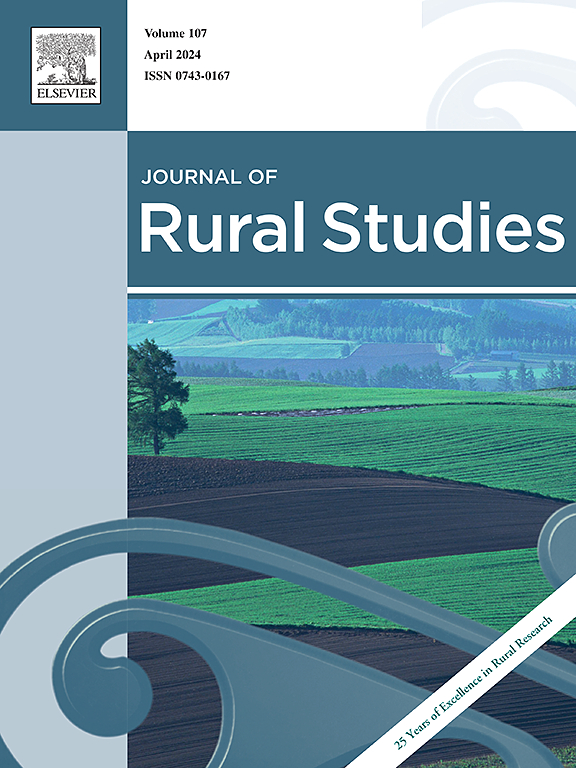Female artists work and creativity in the rural: Beyond core and periphery
IF 5.1
1区 社会学
Q1 GEOGRAPHY
引用次数: 0
Abstract
In this paper we suggest that far too often economic geographic theory has been based on simple core-periphery dualism that mask the reality of creative work in rural or peripheral areas. We take a relational approach and suggest that being on the periphery does not necessarily mean isolation from the centre nor does it mean relegation to lower levels of professional and creative possibilities. The study examines a sample of female contemporary visual artists in the rural Swedish region of Värmland and suggests that affordability and work-life balance are the essential reasons for the locational choices of these peripheral artists. Once settled they employ two strategic coping mechanisms: embracing the creative possibilities of being on the edge; active creation of network spaces and relations. We suggest that for creative workers’ binary spatial divisions are not appropriate and that more nuanced relational geographies support both rural and individual creative careers. In particular, we emphasise one such binary: the presumption that whilst urban creativity is collective, rural creativity is individual and lacking the benefits of closeness and agglomeration. Rather than the dualism presented in the creativity literature, we suggest that the case exposes the importance of thinking relational, spatially and temporarily in terms of project and career life cycles. These artists are not making black or white choices between the social city and the isolated rural but attempting to mix the advantages of both together through translocal processes and networks.
女性艺术家在农村的工作和创作:超越核心与边缘
在本文中,我们认为经济地理理论往往建立在简单的核心-边缘二元论基础上,掩盖了农村或边缘地区创造性工作的现实。我们采用了一种关联性方法,认为边缘地区并不一定意味着与中心地区隔绝,也不意味着被降级到较低的专业和创造可能性水平。本研究以瑞典韦姆兰省农村地区的女性当代视觉艺术家为样本进行研究,结果表明,经济承受能力和工作与生活的平衡是这些边缘艺术家选择定居地的根本原因。一旦定居下来,他们就会采用两种战略应对机制:拥抱边缘地区的创造性可能性;积极创建网络空间和关系。我们认为,对创意工作者来说,二元空间划分并不合适,更细致的关系地理学既支持农村,也支持个人的创意事业。我们特别强调其中一种二元划分:城市创意是集体性的,而农村创意是个体性的,缺乏紧密性和聚集性。我们认为,该案例揭示了从项目和职业生命周期的角度进行关联性、空间性和临时性思考的重要性,而不是创意文献中提出的二元论。这些艺术家并不是在社会化的城市和与世隔绝的乡村之间做出非黑即白的选择,而是试图通过跨地域的过程和网络将两者的优势融合在一起。
本文章由计算机程序翻译,如有差异,请以英文原文为准。
求助全文
约1分钟内获得全文
求助全文
来源期刊

Journal of Rural Studies
Multiple-
CiteScore
9.80
自引率
9.80%
发文量
286
期刊介绍:
The Journal of Rural Studies publishes research articles relating to such rural issues as society, demography, housing, employment, transport, services, land-use, recreation, agriculture and conservation. The focus is on those areas encompassing extensive land-use, with small-scale and diffuse settlement patterns and communities linked into the surrounding landscape and milieux. Particular emphasis will be given to aspects of planning policy and management. The journal is international and interdisciplinary in scope and content.
 求助内容:
求助内容: 应助结果提醒方式:
应助结果提醒方式:


